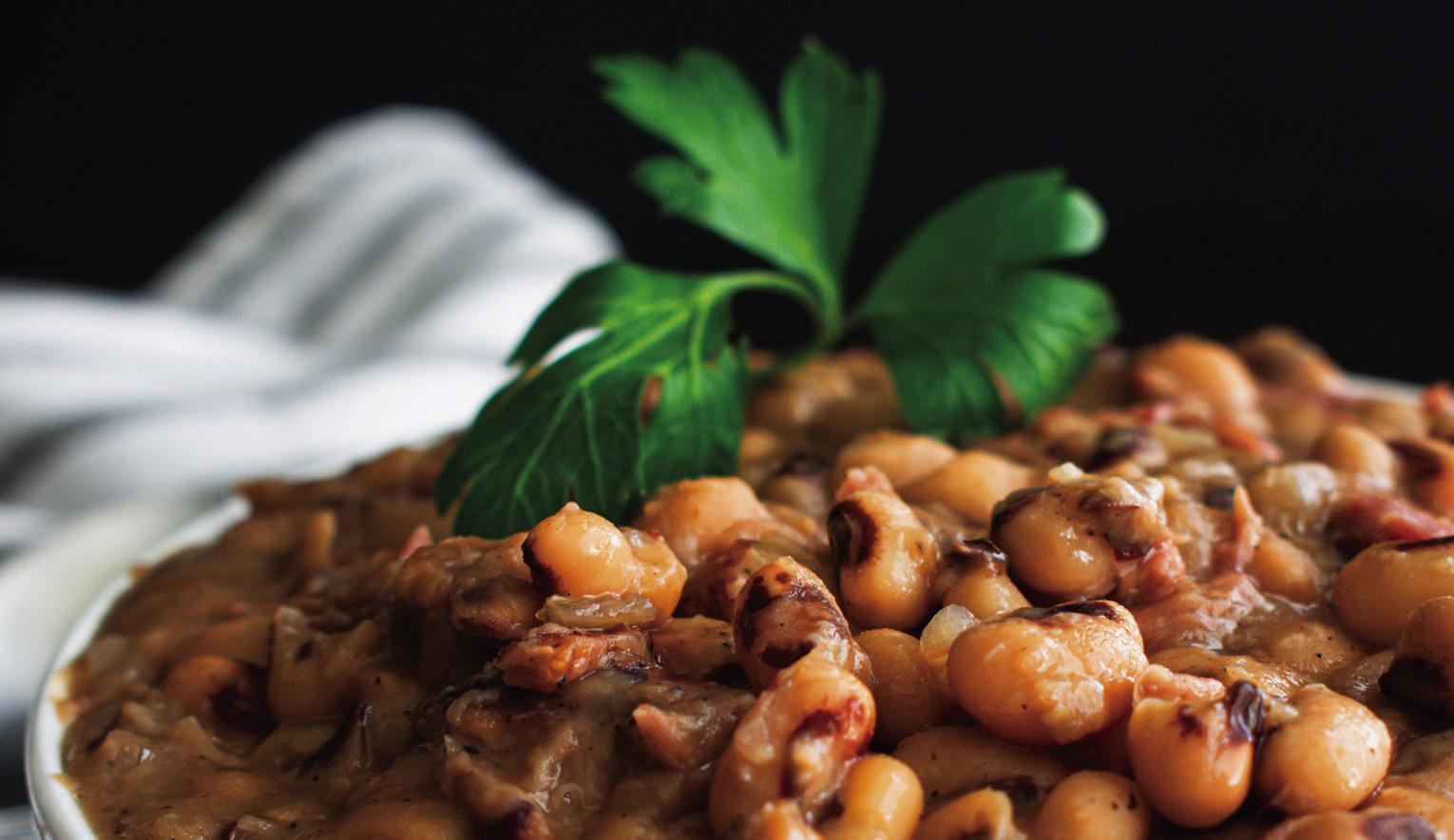
San Marcos Public Library 625 E. Hopkins St.
512-393-8200

Black-eyed peas are a traditional Southern food served for New Year’s Day dinner. The peas represent peace and luck for the year to come.
Photo from Metro Creative
Answers to Go
Q.A. What are the words to “Auld Lang Syne” and what does it mean?
“The Oxford Companion to Popular Music” by Peter Gammond describes “Auld Lang Syne” as a Scottish song internationally used as the concluding anthem of any convivial evening, especially New Year’s Eve. “Auld Lang Syne” literally means “old long since.” The hymn’s popularity is credited to the Scottish bard Robert Burns (1759-1796). Burns, on his own statement, was responsible for two out of the five stanzas, the remainder being older, probably the 17th century. This is the part of the song that Americans know and sing:
Should old acquaintance be forgot, and never brought to mind? Should old acquaintance be forgot, and old lang syne?
CHORUS: For auld lang syne, my dear, For auld lang syne, We’ll take a cup ‘o kindness yet, For auld lang syne!
Q.A.
Why do we eat black eyed peas on New Year’s Day?
I used one of my favorite children’s picture books to answer this question. The book, titled “Shanté Keys and the New Year’s Peas” by Gail Piernas-Davenport, relates the story of what happens when a grandmother realizes she has forgotten to get blackeyed peas (cowpeas) to serve for New Year’s Day dinner. When she sends her granddaugh-ter Shanté out around to her neighbors to borrow some, Shanté finds an entire world of New Year’s traditions that reflect the different cultures in her neighborhood. In the back of the book are listed New Year’s traditions from Austria to Switzerland. The book explains: “Like the Keys family, many African Americans and people from the southern United States believe eating black-eyed peas on Jan. 1 will bring good luck and prosperity for the new year. This has been a custom since the Civil War. Sometimes, a dime is added to the pot, or else a penny is placed under the pot when the dish is served. Blackeyed peas are thought by many to symbolize pennies. Others believe that peas mean peace in the new year. Traditionally, black-eyed peas are cooked with ham hocks, bacon slices or salt pork and served with rice in a dish called Hoppin’ John. It’s often served with greens — which represent folding monmost ey — and corn bread, which stands for gold.”
The following is a recipe for “Southern Hopping John” from the book “The Historical Cookbook of the American Negro” by the National Council of Negro Women, Inc. (reprinted 2000) 1 lb. (2 to 2-1/4) cups dried blackeye peas 2 ½ quarts water 8 slices bacon, cut in small strips, or 4 ounces salt pork 1 ½ cups chopped onion 2 buds garlic minced 1 teaspoon hot pepper sauce 1 tablespoon mixed herbs 2 cups uncooked rice Chopped parsley Wash beans and soak in water overnight. Fry bacon over moderate heat until brown. Add onion and continue cooking until onion is tender. Add garlic, salt, pepper, hot sauce, herbs. In large pan combine soaked peas, water, bacon and onion mixture. Cover pan, bring to boil. Simmer until beans are tender, about an hour. Stir in rice and cook under low heat 30 - 40 minutes or until rice is tender and fluffy. Spoon into large serving dish, garnish with chopped parsley.
(Council Regions II and IV) Suzanne Sanders is the columnist for the library. She is the Community Services Manager for the San Marcos Public Library and came from the Austin Public Library in 2015 after having served there as a librarian for over 20 years. She gratefully accepts your questions for this column.











